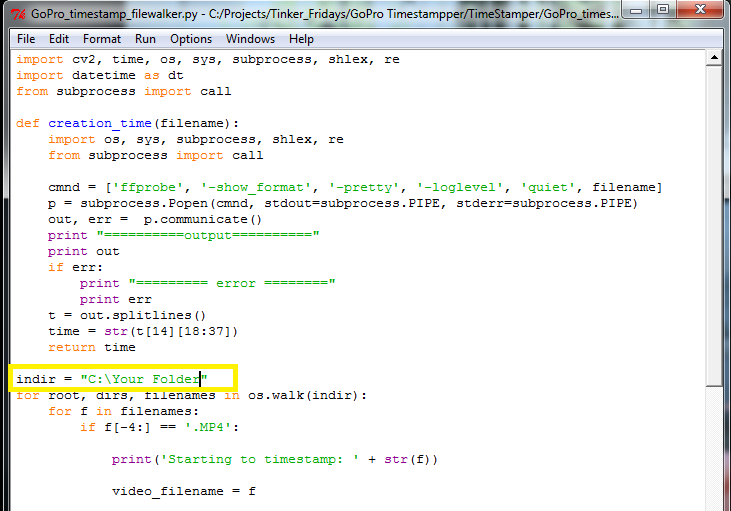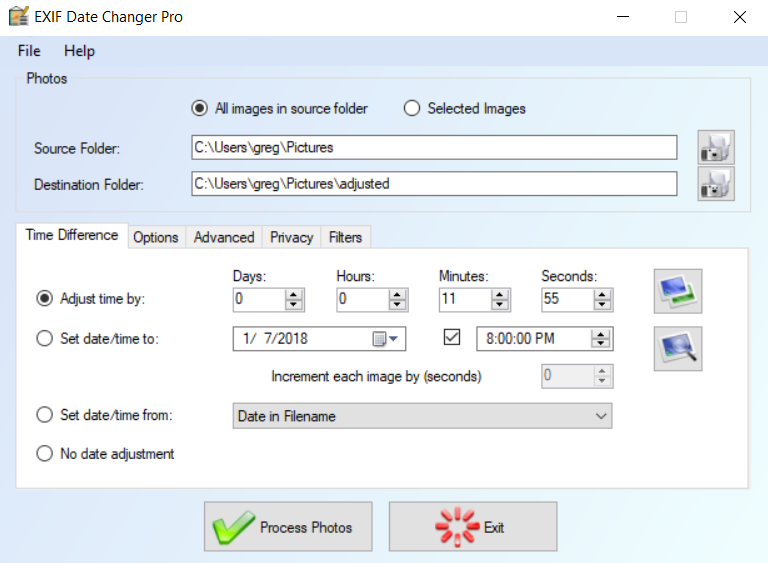

Instead, let’s try the new Batch Rename feature in OS X Yosemite. Now, we could always go through and rename each one individually, but that would take a good bit of time, especially for lists of files much larger than the 20 we’re dealing with here. That’s not very helpful, and we’d like to rename them with a file name that includes the date they were shot and a brief description. Here’s an example to illustrate this process.Ībove, we have a Finder folder with 20 image files, all named with the original camera naming scheme (IMG_4087, IMG_4088, etc.). To use it, simply highlight or select multiple files in a Finder window, right-click (or Control-click) on the selected items, and choose Rename. With OS X Yosemite, however, Apple has integrated basic batch renaming capabilities directly into Finder. Renaming single files was simple enough, but if you had to rename multiple files, you’d need apps like Renamer or NameChanger.
#Batch file rename add date mac#
Prior to OS X Yosemite, Mac users looking to batch rename files in the OS X Finder would have to turn to third party tools. Thankfully, Apple has recently introduced a new feature in OS X that makes this process much easier.

But if you haven’t been applying such a file naming strategy from the get-go, you’ll likely find yourself faced with the daunting task of renaming large numbers of existing files. A consistent file name structure, including information such as the date, project, and description, can often be the best way to properly organize and locate digital data. Sometimes, however, nothing beats a good file naming scheme. To this end, Apple has introduced several features in OS X to help users corral their pictures, documents, and other files, such as Spotlight metadata and Finder Tags. Copy all the values from column C to the clipboard and paste them inside the DOS window or better still, put them inside a new text file and give it a name like rename.bat.Įxecute and all files that match the criteria are renamed instantly.How to Batch Rename Multiple Files in OS X YosemiteĪs our digital libraries continue to grow, so too has the importance of efficiently managing our data. In Column C, type the following Excel formula and your command is ready to be executed.Ĭopy paste the same formula across all cells in column C for which you have corresponding values in Column A or B. Step 5: Your source filenames are now in column A while the Destination files are in column B - we will now convert this into a DOS rename command. *For more complex criteria, you may want to put the file extensions in a separate column by splitting the file name using period (.) as the delimiter. Step 4: In the blank adjacent column, add a corresponding Excel function - for instance, use SUBSTITUTE to change specific text in the filenames, use CONCATENATE() with DATE() if you want to add date to the filename, etc. Fire your copy of Microsoft Excel or Google Docs Spreadsheets and paste those file names into the first spreadsheet column. Copy that file list to the clipboard by selecting Mark from the contextual menu. Step 2: Type “dir /b” to see a skeleton list of all files in the current directory. Step 1: Type cmd and switch (using “cd” command) to the directory that contains the files you want to rename in bulk. To rename files in bulk more efficiently, you can either learn some complex shell scripting language (SED, AWK, Perl) or switch to something more simple - a spreadsheet. That’s a fairly quick solution but not very flexible because you don’t get to specify any choices or criteria.įor instance, how do you append the current date to the filename ? Or you want to replace only certain words in the file names (like a spelling error)? Or you want files to follow a different renaming system like file-A.jpg instead of the default file(1).jpg.
#Batch file rename add date windows#
Windows will append a unique sequence number to each of the file names. Select all the files, press F2 and type some descriptive text. Renaming multiples files on your Windows computer is easy.


 0 kommentar(er)
0 kommentar(er)
